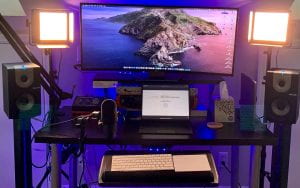 These are the recorded lectures of Econ 481-3, Topics in Econometrics, at Northwestern University. These videos were recorded while the class was being taught over Zoom in the Spring 2021, but any type of student participation was edited out. As a result of the editing, the lectures are shorter than a live lecture and some parts may involve unnatural transitions. The purpose of these recordings is to provide additional resources to students taking Econ 481-3 in future years, but the material here is public and free to use for students elsewhere at their own risk. The slides, lectures notes, and videos may be printed and reproduced for individual or instructional use, but may not be used for any type of commercial purposes.
These are the recorded lectures of Econ 481-3, Topics in Econometrics, at Northwestern University. These videos were recorded while the class was being taught over Zoom in the Spring 2021, but any type of student participation was edited out. As a result of the editing, the lectures are shorter than a live lecture and some parts may involve unnatural transitions. The purpose of these recordings is to provide additional resources to students taking Econ 481-3 in future years, but the material here is public and free to use for students elsewhere at their own risk. The slides, lectures notes, and videos may be printed and reproduced for individual or instructional use, but may not be used for any type of commercial purposes.
The syllabus of the class is below and each lecture has a companion set of slides and lecture notes.
Syllabus | Incomplete Lecture Notes | Class Canvas Page
Part I: Instrumental Variables 101
Lecture 1: Selection on Observables
Lecture 2: Roy Models and LATE
Lecture 3: Marginal Treatment Effects
Lecture 4: Extrapolation and Extensions
Lecture 5: Outcome Tests via MTEs
Part II: Understanding Asymptotic Approximations
Lecture 6: Local Asymptotics
Lecture 7: Contiguity
Lecture 8: Local Asymptotic Normality
Lecture 9: Convolution Theorems
Part III: Uniformly Valid Inference with Moment Inequalities
Lecture 10: The Bahadur-Savage Problem
Lecture 11: Uniformity of the t-test
Lecture 12: Uniformity of Subsampling
Lecture 13: Inference in Moment Inequality Models I
Lecture 14: Inference in Moment Inequality Models II
Part IV: Regression Discontinuity Design
Lectures 15 to 18: RDD
These lectures involved students’ presentations and therefore are unfortunately not publicly available